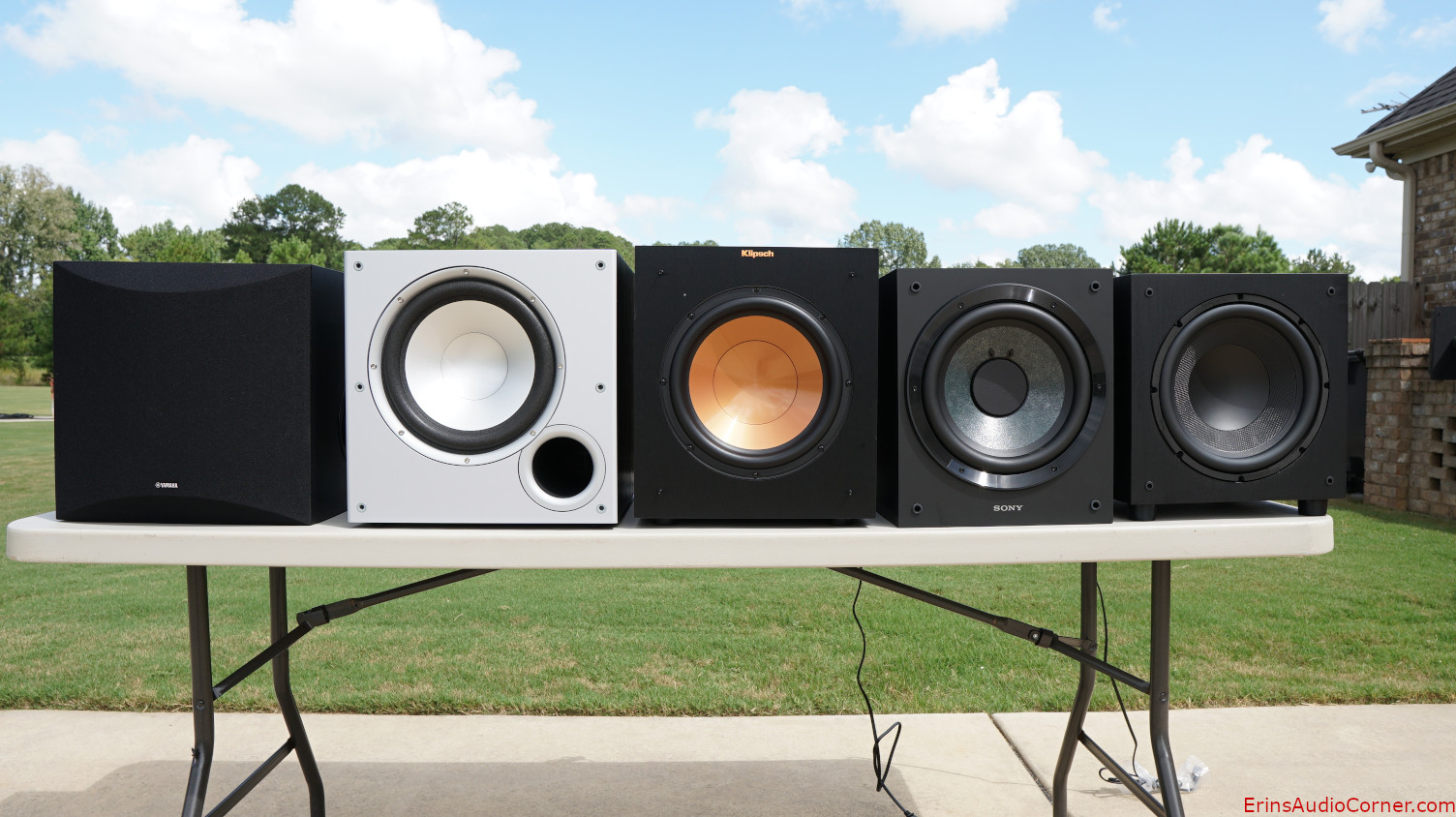Foreword
This page serves as a Master Link to my subwoofer testing which can be found here:
Erin’s Audio Corner Subwoofer CEA-2010 Results
Test Setup/Conditions:
The above Google document provides maximum SPL data of loudspeakers (subwoofers, mainly) using the both the CEA-2010-A and CEA-2010-B metrics of defining a subwoofer’s maximum SPL based on a set of harmonic distortion thresholds.
Measurements are Maximum (Peak) SPL, referenced to 2-meter Ground Plane (2 pi) conditions. Tests are conducted either outdoors or indoors (in which case, room correction is applied based on an outdoor response reference) with Klippel’s Distortion Analyzer 2 employing the use of Klippel’s TRF module for frequency response and group delay and Klippel’s Tone Burst Mesaurement (TBM) module for CEA-2010 measurements. The TBM Module provides an automatic tone burst measurement sequence based on Standard ANSI/CEA-2010. Using a fully adjustable tone burst stimulus, the maximum sound pressure level is measured. For a user defined set of frequencies, the measurement is automatically repeated with increased input level. If the distortion in the sound pressure has reached a user defined threshold, the measurement is stopped and the peak SPL is reported. Optionally, a second state signal (displacement, current or voltage) is measured simultaneously. The Burst measurement module is designed to run band limited burst measurements versus input voltage and frequency. The results are evaluated in the frequency domain towards a threshold curve. For each frequency, the voltage is increased until the threshold curve is reached. The highest voltage not below the threshold curve is used to calculate the peak level of this state signal (according to CEA2010).
Specific steps used to conduct TBM measurements are defined by Klippel in this document here: https://www.klippel.de/fileadmin/klippel/Bilder/Our_Products/R-D_System/PDF/S44_TBM_Tone_Burst_Measurement.pdf
Below is a video explaining the setup and providing a demonstration of the Klippel software in use.
CEA-2010-A vs CEA-2010-B:
CEA-2010-A and CEA-2010-B are completely different tests with different distortion thresholds and therefore should only be compared to other like tests (A vs A, B vs B). To date, I am the only independent outlet providing -B tests so no worries there. Comparisons between my own -A and -B tests should only be made for educational purposes.
The -A specification uses only frequencies from 20Hz to 63H in 1/3-Octave steps (20/25/31.5/40 Hz). Distortion thresholds are the same for each frequency. Other outlets have taken the liberty to use those same thresholds and apply them to frequencies above/below the -A standard. In order to provide a comparison, I have also done the same. However, note these frequencies below 20Hz and above 63Hz are not part of the CEA-2010-A specification.
The -B specification uses frequencies 12.5/16/20/25/31.5/40/60/80/100/120/160 Hz with varying distortion thresholds per frequency. More can be read about this in the CTA-2010-B specification. Peak values are obtained, then weighted per the spec. Maximum SPL values are provided for each frequency. A final “broadband” Peak SPL value is provided based on each frequency’s max SPL. While I have chosen to provide “extended” frequency results for -A (those tones above and below the specification’s called out frequencies), I am not doing so for -B because there is no reasonable way to determine what the threshold for those values should be. I believe those who wrote the spec to be smarter than me and I do not take liberties in adjusting specifications at will.
CEA-2010 Test Results (Google Sheet):
An interactive Google document with tabular results and corresponding graphics can be found here:
Erin’s Audio Corner Subwoofer CEA-2010 Results
I have purposely chosen to provide the results in the above document because the resolution and interactivity is much better there than it is when provided on this website’s page.
Besides the max SPL capabilities per each standard, I have included features I feel are important such as:
- Price
- Size
- Crossovers
- Phase (which is a huge benefit if it is variable phase)
- EQ
- Enclosure Loading (sealed, ported)
- Port location
I have also provided a “Value” column, providing the cost per output (40-80Hz average output for CEA-2010-A and Broadband output for CEA-2010-B) as well as size vs output. These are factors some may weigh heavily.
Feel free to browse around. Feel free to filter columns to help narrow your list of candidates. For example, if you are on a limited budget, you can use the price column to filter out subwoofers over a dollar amount and then choose the best value.
Updates
Note: Below links are most likely affiliate links which helps me earn a small (~4%) commission at no additional cost to you. Please use these if you plan to purchase a speaker as it helps me pay for this website and keep things going.
09/15/2020:
10/06/2020:
11/14/2020:
10/29/2021: Budget 12-inch subwoofer shootout!
Contribute
If you like what you see here and want to help me keep it going, please consider donating via the PayPal Contribute button located below. Donations help me pay for new items to test, hardware to build test rigs (some speakers require different test stands), miscellaneous items and costs of the site’s server space and bandwidth. All of which I otherwise pay out of pocket. So, if you can help chip in a few bucks, know that it’s very much appreciated.
You can also join my Facebook and YouTube pages if you’d like to follow along with updates.
Affiliate Links:
When applicable, I provide affiliate links (either through Amazon, Parts-Express, etc) to help me generate a bit of money which helps me keep this thing going. Using these links costs you no additional money. It is simply a 2-6% commission for me directing sales to a given affiliate. So, if you appreciate what I am doing here, please also consider purchasing any items in my list through my affiliate links (located in the subwoofer name cell). It’s not much. But it adds up.
